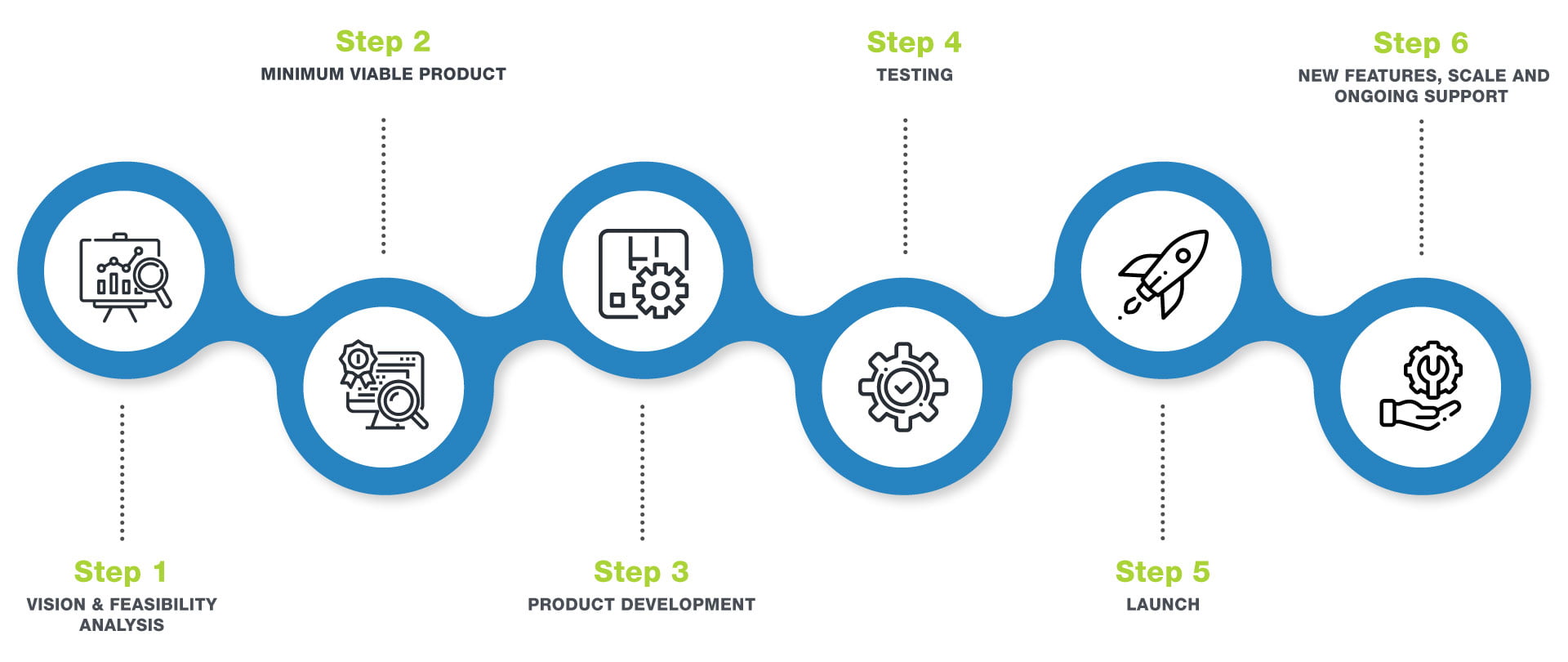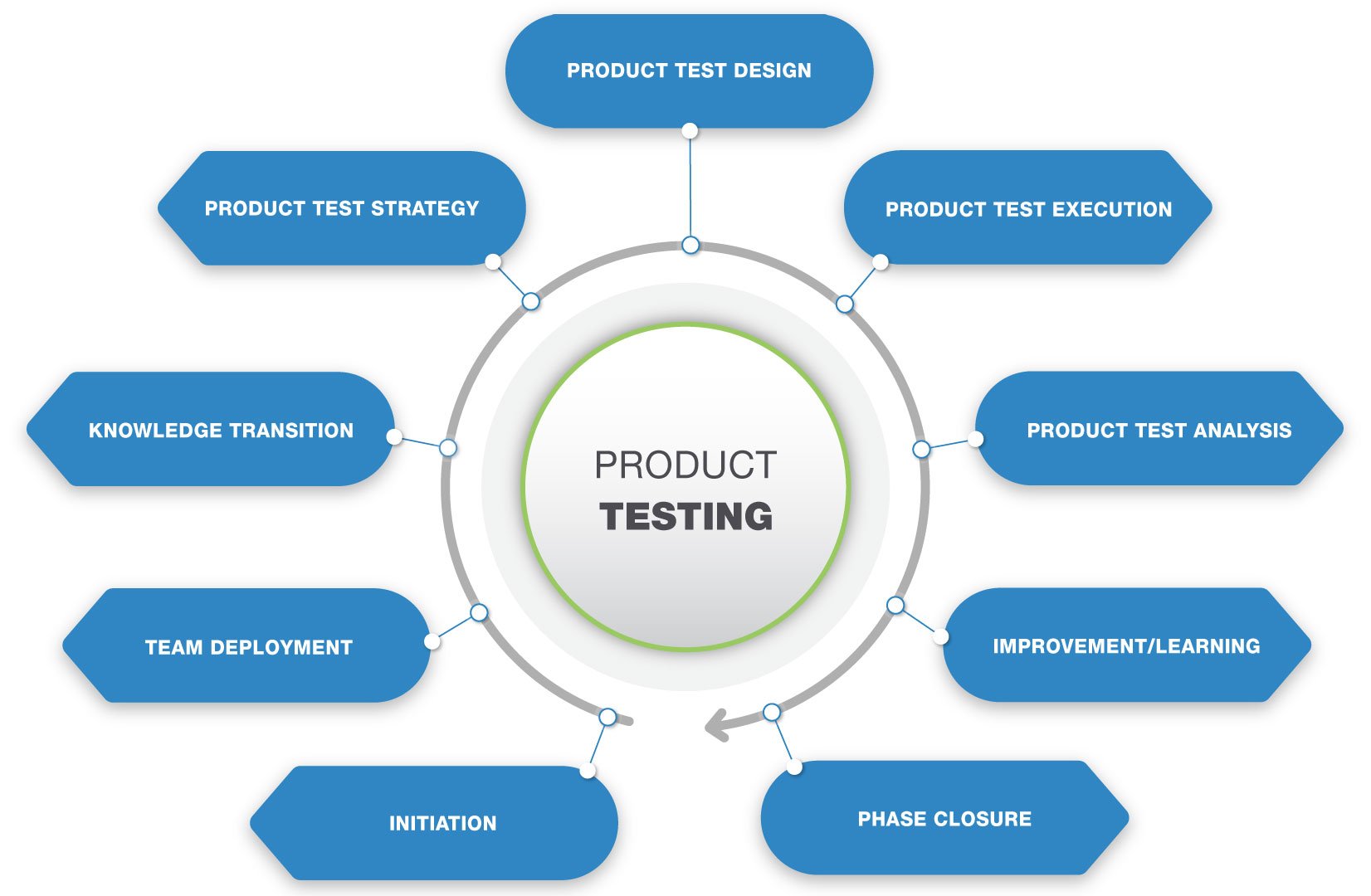Step 1: Vision & Feasibility Analysis
Founders or SBU Heads come to us with a vision for a market need. Generally the vision is a strategic level overview of what the product is supposed to do. We work with our customers to:
- Evaluate whether it’s possible to develop the product.
- If yes, then a Proof of Concept (PoC) is developed that leads to a Minimum Viable Product (MVP).
- If no, then we help our customers develop the vision, being cognizant of the product development constraints at the time.
The outcome of this step is a consolidated Feasibility Analysis report and a Go/No-Go decision for MVP development.
Step 2: Minimum Viable Product
An MVP is the first complete manifestation of the Proof of Concept. It’s a product with minimal features, sans bells and whistles. At this stage the product works just enough for you to test it with your target audience, gather feedback and course correct if need be.
An MVP helps you evaluate your assumptions & hypotheses, fast and cheap.
Step 3: Product Development
An MVP leads to a few cycles of prototyping, testing and fine-tuning. Next, resources are deployed to develop the full-fledged product. At this stage:
- The product architecture is defined. It is ensured that the product is scalable in terms of technology, features and changing market requirements.
- UX/UI of the product is determined and customer journeys start taking shape.
- Teams start developing the product based on standard industry practices such as Agile and DevOps.
Time to market and your profitability are key factors that are kept in mind as we develop the product.
Step 4: Testing
Multiple testing approaches and types of tests are deployed at various levels of product development. The product is tested for hundreds of scenarios, if not thousands, across areas such as functionality, performance, user acceptability, resilience, compatibilities to name just a few.
Ecotech has its own testing methodology, which is followed for all the projects that need independent testing. The tests can be customized as per the client’s or application’s specific testing needs.
Clients are welcome to hire us exclusively for Testing. Some of the testing services we provide are:
- Testing management & consulting services: Here we assess your current testing practices/processes, help you improve the quality of your software, identify testing strategies, develop test plans and test cases, manage and execute tests, and measure test results.
- Core software Testing: This includes comprehensive application testing pertaining to system testing, system integration testing, regression testing, performance testing and user acceptance testing.
- Specialized testing: The series of tests comprises of mobile application testing, web application testing and manual and automation testing (load testing).
Why engage us for Testing:
- Customers feel far more confident about their products when we as a third party, work to completely understand different user journeys and test the product independent of the software development team’s view.
- Software specifications and requirements are validated and verified while the software is getting designed or developed.
- At appropriate points, test teams run various compliance processes to uncover and report defects.
- The team ensures that the software satisfies all the boundary conditions.
- Complete data recovery is ensured in case of sudden system break down.
- Software’s performance is observed under maximum load conditions.
- It creates a healthy competition amongst the application developers and test team that leads to a superior and robust software as an outcome.
- Reliable information presented by the test team helps the stake holders to make correct decision at any time during product development.
Step 5: Launch
Lead up: As the time for launch nears, it is tempting to pack in more features, incorporate more feedback, test more, make the product lighter, faster, better. It is important to resist this temptation to avoid product delays or worse, shipping a product with untested features. Having a clear development roadmap ensures everyone knows what goes out in 1.0 and how 1.1 is shaping up. Ecotech guides you through the entire process.
Live: The big moment. We ensure that there are no last minute hiccups and the product is rolled out smoothly, according to plan.
1.1 and beyond: It’s been a week. The product is being used by end customers. You have been receiving feedback. It’s time to start working on the next iteration of the product. Performance improvements, new features, UI/UX improvements are all on the roadmap.
Step 6: New features, scale and ongoing support
Right at the start, we work with you to refine your vision for the product. Correspondingly, the architecture is built to handle complex features, diverse expectations across geographies and a myriad other constraints.
Ecotech also ensures that your product’s scale does not come at the cost of performance or security. We build the product such that it handles increased number of features and user base with ease.
All this, while we continue to improve the performance of the live product until end of life or planned obsolescence.
Get in Touch


